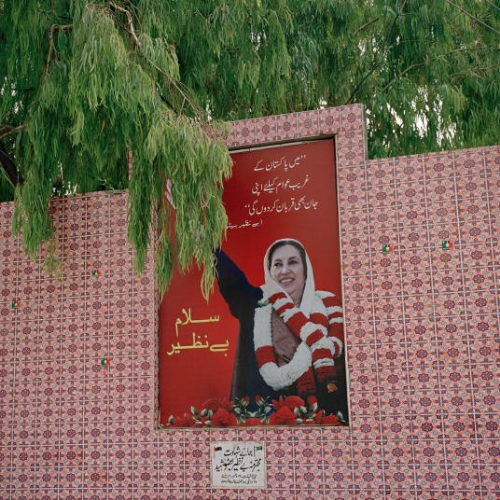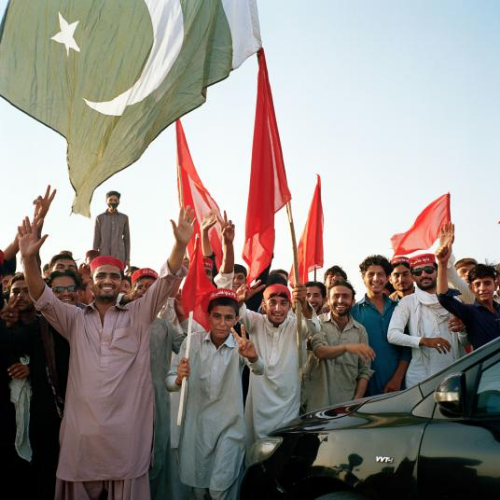SHAHDARA, Pakistan—Bushra Khaliq stood in the middle of a village home, chin up and shoulders back, holding the attention of fifty women around her. Old and young, they wore Pakistani tunics and scarves; some cradled and fed babies, others shushed children who tugged at their sleeves. Sun from the open roof warmed Khaliq’s face as she looked around, holding eye contact with one woman, then another. “Who is going to decide your vote?” she asked. The women clapped and shouted in unison: “Myself!”
Khaliq, a 50-year-old human rights defender and community organizer, was holding a political participation workshop session, the first of several that day in the rural outskirts of Lahore. The women attendants were local wives and daughters of agricultural laborers. Many were illiterate, though several worked low-income jobs to send their daughters to school. It was the week before Pakistan’s general election, and Khaliq, who runs an organization called Women in Struggle for Empowerment (WISE), encouraged the women to vote.
Many rural women are not registered for their National Identity Cards, a requirement not only to vote but also to open a bank account and get a driver’s license. In Pakistan, many women in rural and tribal areas have not been able to do these things with or without the card. In accordance with patriarchal customs and family pressures, they live in the privacy of their homes without legal identities.
Yet Pakistan’s July 2018 elections saw an increase of 3.8 million newly registered women voters. The dramatic increase follows a 2017 law requiring at least a 10 percent female voter turnout to legitimize each district’s count. Pakistan has allowed women to vote since 1956, yet it ranks among the last in the world in female election participation.
The remote tribal area that borders Afghanistan, formally called the Federally Administered Tribal Areas (FATA) of northwestern Pakistan, has traditionally been least tolerant of women in public spaces, some women activists say. Yet registration in 2018 increased by 66 percent from 2013. This rise in women’s votes is a victory for women like Khaliq, who are fighting for women’s inclusion and equality in Pakistan, especially among marginalized communities in rural and tribal areas.
Encouraging more women to vote is only the beginning. Women themselves disagree over what their role should be in Pakistani society. The patriarchal, conservative mainstream dismisses feminism as a Western idea threatening traditional social structures. Those who advocate for equality between women and men—the heart of feminism—are fighting an uphill battle. They face pushback from the state, religious institutions, and, perhaps most jarringly, other women.
There are different kinds of activists among women in Pakistan. Some are secular, progressive women like Rukhshanda Naz, who was 15 years old when she first went on a hunger strike. She was the youngest daughter of her father’s 12 children, and wanted to go to an all-girls’ boarding school against his wishes. It took one day of activism to convince her father, but her family members objected again when she wanted to go to law school. “My brother said he would kill himself,” she said. Studying law meant she’d sit among men outside of her family, which would be dishonorable to him. Her brother went to Saudi Arabia for work. Naz got her law degree, became a human rights lawyer, opened a women’s shelter in Khyber Pakhtunkhwa, and worked as resident director of the Aurat Foundation, one of Pakistan’s leading organizations for women’s rights. She is also the UN Women head for the tribal areas of Khyber Pakhtunkhwa and FATA.
The women in Naz’s shelter are survivors of extreme violence whose status as single women makes them highly vulnerable outside of the shelter. When we met, she brought three Afghan sisters whose brother had killed their mother after their father died so he could get her share of the land inheritance after their father died. Naz also had with her a 22-year-old woman from Kabul whose father disappeared into Taliban hands for having worked with the United Nations. The woman had been beaten, kidnapped, and sexually assaulted for refusing marriage to a Taliban member. Women hidden in Naz’s shelter are relatively safe, but outside its walls Khyber Pakhtunkhwa has high incidences of “honor”-based violence. Last June, a jirga (typically all-male tribal council) ordered the “honor” killing of a 13-year-old girl for “running away with men.” At least 180 cases of domestic violence were reported in Khyber Pakhtunkhwa in 2017, according to Human Rights Watch, including 94 women murdered by immediate family.
Others such as Farhat Hashmi represent women from a different perspective. A scholar with a doctoral degree in Islamic studies, Hashmi founded the Al-Huda movement. The group, started in the 1990s, has gained huge traction among upper-middle class Pakistani women as a women’s religious education system that emphasizes conservative Quranic teachings. The Al-Huda schools drew attention after Tashfeen Malik, a former student who became radicalized soon after, carried out a terror attack in San Bernardino, California, in 2015. While there is no proven connection between the Al-Huda movement and any terrorist organization, the group is one of several “piety movements” that has grown in popularity among Pakistani women.
The role of women in Al-Huda’s teachings is fundamentally different from the position women like Naz and Khaliq are fighting for: Women are taught to obey and submit to their husbands as much as possible, to protect their husbands’ “honor,” and never to refuse his physical demands. As Gullalai, director of a women’s organization called Khwendo Kor (“Sister’s Home” in Pashto) puts it, “What they think are women’s rights are not what we think are women’s rights.”
The debate about whether to pursue women’s rights in a secular or religious framework has continued since the 1980s, when progressive feminism first began to gain momentum in Pakistan. Though women’s movements existed in Pakistan from the country’s beginnings, they mobilized in new ways when Zia-ul-Haq’s military dictatorship instituted a fundamentalist form of Islamic law. Under the system, fornication and adultery became punishable by stoning and whipping, murder was privatized under the Qisas and Diyat law (providing a loophole for perpetrators of “honor killings”), and women’s testimony was only worth half of men’s in court.
These laws spurred the formation in 1981 of the Women Action Forum (WAF), a network of activists who lobby for secular, progressive women’s rights. On February 12, 1983, the WAF and Pakistan Women Lawyers’ Association organized a march against the discriminatory laws, only to be attacked, baton charged, and tear gassed by policemen in the streets of Lahore. The date became known as a “black day for women’s rights,” Naz says, and was later declared Pakistan’s National Women’s Day.
Since then, Pakistan’s military has grown stronger and more entrenched in its control of both state and economy. The 2018 elections saw the unprecedented inclusion of extremist and militant sectarian groups running for office, including a UN-declared terrorist with a $10 million U.S. bounty on his head. At the same time, hundreds of people were killed or injured by a series of pre-election suicide attacks.
Some conservative movements have become far more popular than the progressive women’s movement. Some scholars explain the appeal of these faith-based organizations as a channel for women to exercise agency and autonomy by pointedly embracing a non-Western form of womanhood. It’s a different definition of empowerment. Its adherents also avoid the shame, pressure, and physical threat that secular feminists regularly face. “They have the support of religion and acceptance in society, so they are in expansion—and we are shrinking,” Naz said.
There is a third group of women in Pakistan who don’t connect with either secular feminism or conservative ideology—women who are just trying to survive, said Saima Jasam, a researcher who focuses on women’s and minority rights in Pakistan at the German Heinrich Böll Foundation. Jasam grew up in a Hindu family that decided to stay in Lahore after partition. She witnessed her parents being stabbed to death in her home when she was 15 years old. “The person who stabbed my father said he’d dreamed that he had to kill Hindus,” Jasam said. Though the rest of her family was in India, Jasam insisted on finishing her studies in Lahore, where she fell in love with a Muslim man and converted to Islam to marry him. A year later, he died in an accident. Jasam was pregnant and lost her child. She was 25 years old. At 27, she began working on women’s issues, eventually writing a book on “honor” killings and doing fieldwork.
Jasam’s way of ignoring criticism and conservative pressure is to focus on protecting the vulnerable. “They are facing a different level of patriarchy: food insecurity, health insecurity. They’re just surviving,” Jasam said. Secular women—which, to secular activists, doesn’t mean anti-religion, but anti-conflation of religion and state—are the ones who have secured legislative change to protect women better over the last 20 years.
Gullalai, who is originally from FATA and spends much of her time engaging women in the most tribal and conservative parts of Pakistan, said the gap between feminist beliefs and Pakistani reality requires pragmatic compromise. She works to meet women where they are. It’s easy to convince women that they should have inheritance rights, for example, but there are religious texts which state women should have only half a share. “So women will say, ‘Oh, we want half,’” Gullalai said. Personally, she believes women should have an equal share, but she won’t bring it into conversations in the tribal setting. Gullalai said, “At the moment we are even advocating for half!”
Sometimes Pakistani feminists compromise to engage Jasam’s “third group” of women; other times, those women inspire feminists toward more radical activism.
In the rural Okara district of Punjab province, women have long played a leading role in a farmers’ movement against military land grabs. They have used thappas—wooden sticks used in laundry—to face down brutal Pakistani paramilitary forces that have beaten, murdered, detained, and tortured local farmers and their children. Khaliq openly aligned with this farmers’ movement in 2016, speaking up in solidarity with them. In response, the Ministry of Interior widely circulated a letter accusing her NGO of unspecified activities “detrimental to national/strategic security.”
In 2017, Khaliq went to court to defend herself and her organization. Her NGO had been training women to protect themselves against harassment, she argued. How was that detrimental to national security? Khaliq won.
Women are Khaliq’s inspiration. “These are ordinary and illiterate women who spend their whole lives in homes, but they stand up and fight against army brutalities,” she says. “They are ahead of the men. I feel my responsibility to go shoulder-to-shoulder with them. Their strength gives us more strength.”
Outside the political-participation meeting house in Shahdara, open gutters spilled onto the village streets, flies buzzing around cows and carts moving through the uneven dirt alleys.
Khaliq first met this group of women six years ago, she said, following her usual method of engaging rural women: knocking on doors one by one, asking for the women, bringing them to weekly meetings, building a sisterhood. In the lead-up to the most recent election, her women’s groups went door-to-door throughout small villages, asking women if they had ID cards and bringing mobile vans to register them if they didn’t. They’d found more than 20,000 women unregistered in one district, Khaliq said, and managed to get identification cards for 7,000 of them.
“10 years ago, we were not aware of our basic rights. Now we know how to work for our own choices,” said 48-year-old Hafeezah Bibi, standing up in a bright teal scarf. She was the only woman on Shahdara’s local council, which rarely addressed what she called “poor women’s problems”: overflowing garbage dumps, broken sewage systems, and exploitative wages. “They don’t listen to us, but we keep asking and arguing,” she said.
Another woman who only gave her first name, Perveen, said she’d been stitching shoe straps at home for 300 rupees ($2.45) a day, without knowing what others made or whether she could get a higher wage. After joining the group, she’d learned about labor laws and organizing—and demanded a raise. “I only got 5 rupees higher,” she said, “But we have a long way to go.”
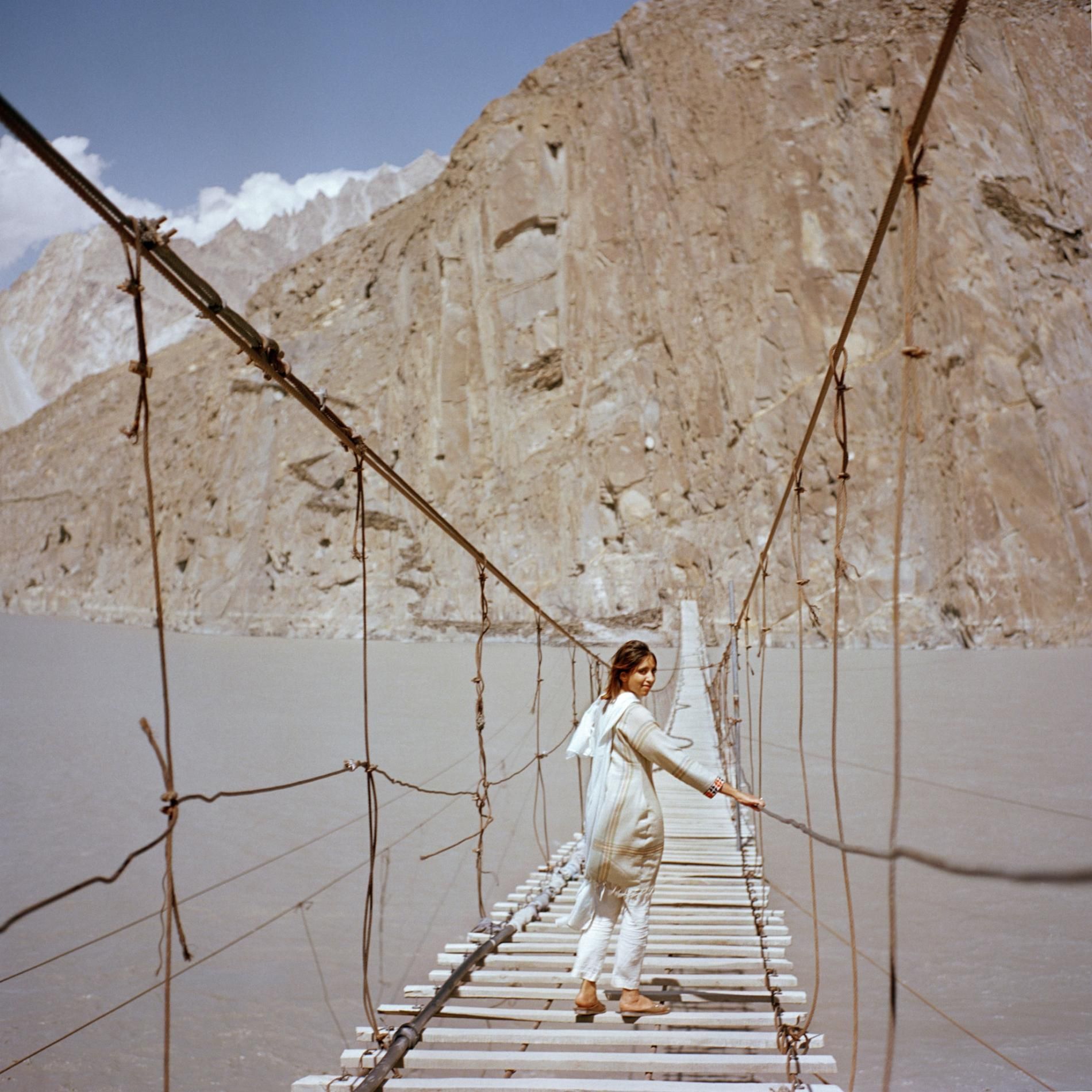
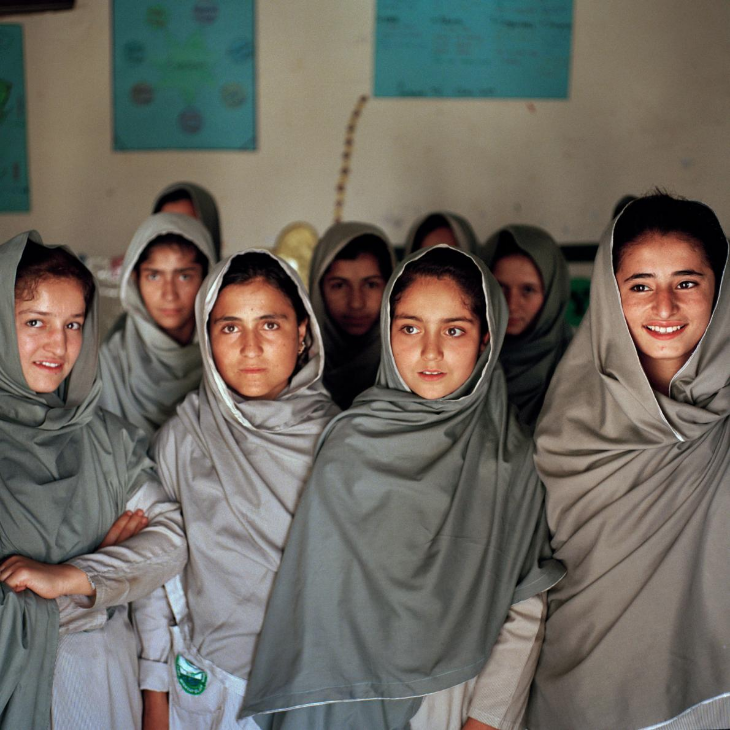
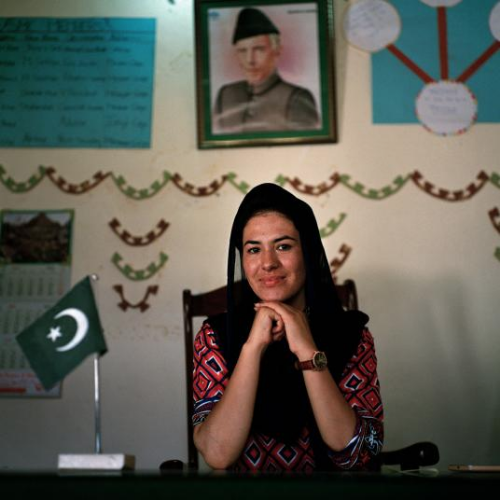
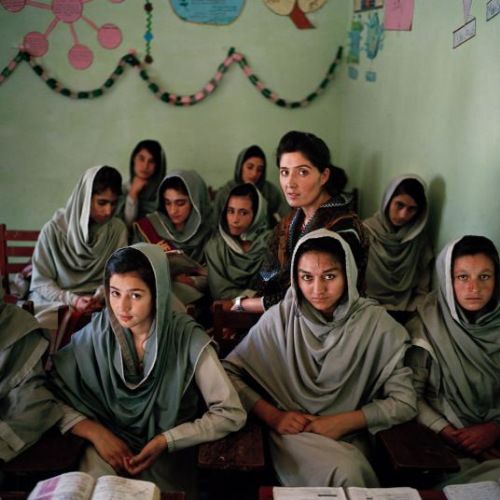



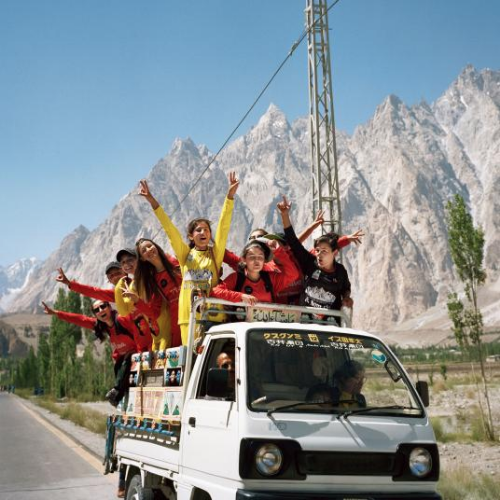
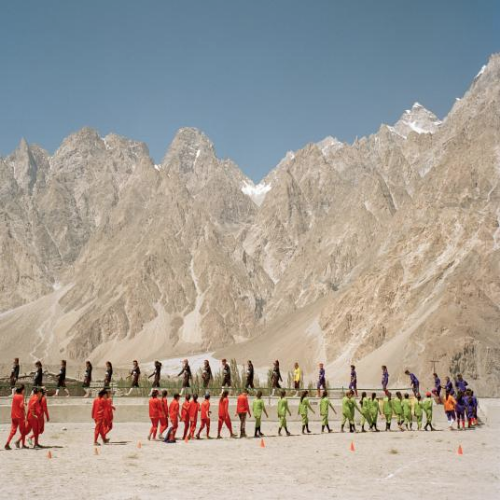




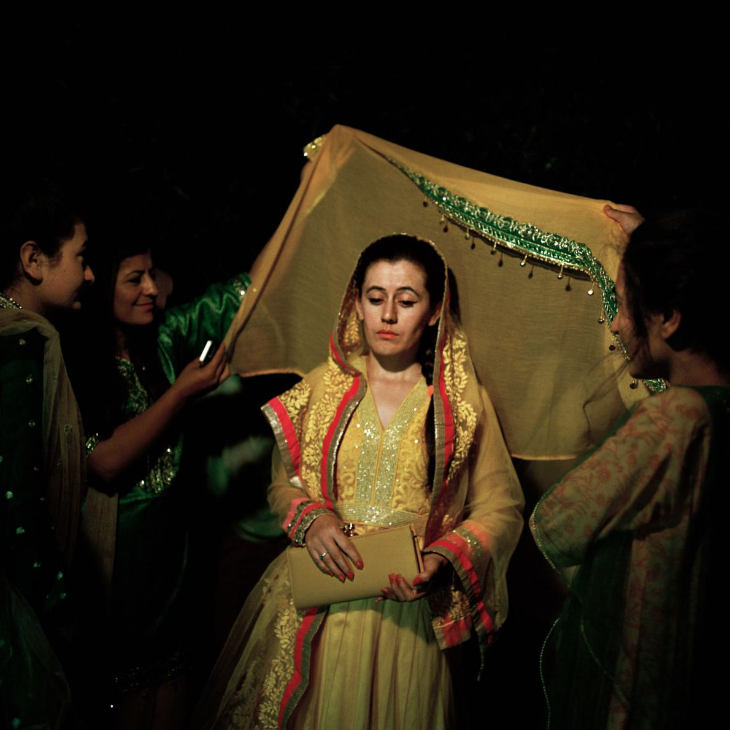
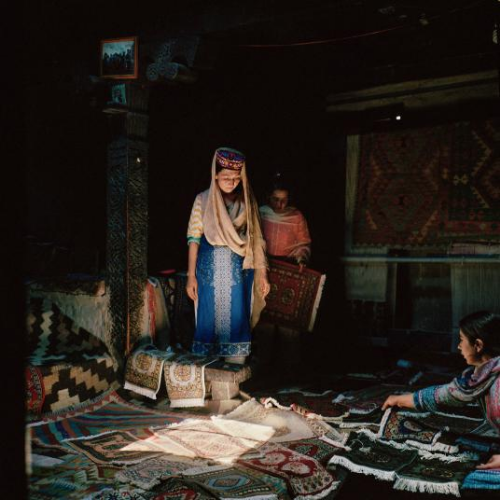
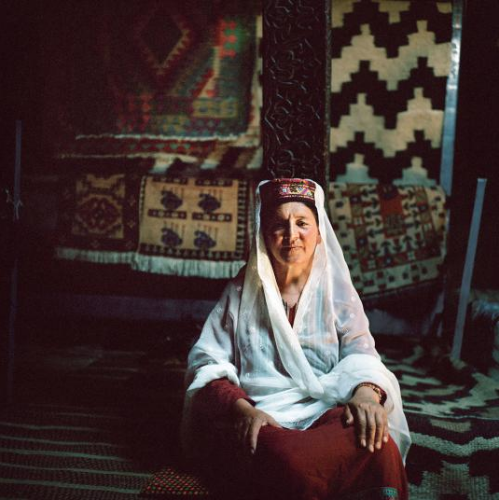

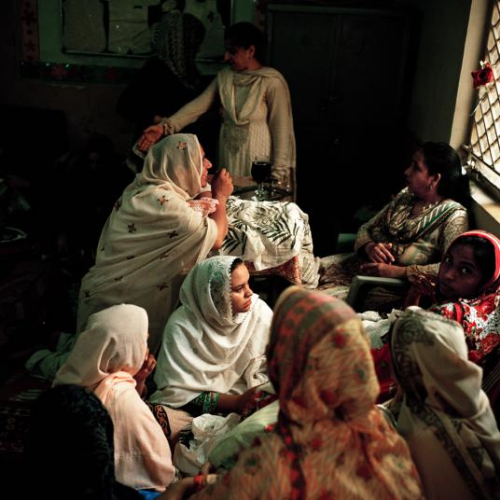







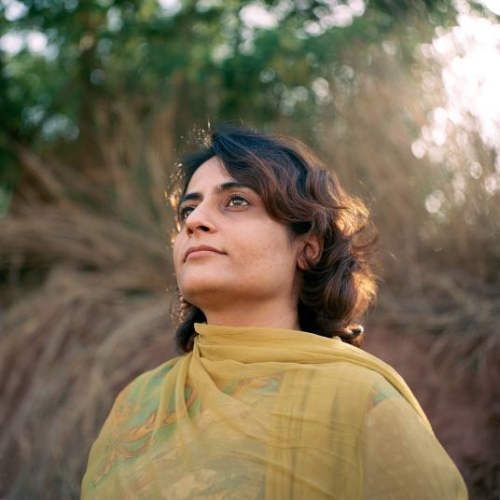



![Rukhshanda Naz, a lawyer and activist who runs a women’s shelter in Khyber Pakhtunkhwa, stands with one of the Afghan women in her shelter. The 23-year-old Afghan woman fled Kabul after being beaten, kidnapped, and sexually assaulted for refusing marriage to a Taliban member. “Women’s solidarity should be without ethnicity or borders,” said Naz. “We want to live a life which our mothers didn’t have a chance and their mothers didn’t have a chance [to live], a life with rights and dignity.” Image by Sara Hylton/National Geographic. Pakistan, 2019. Rukhshanda Naz, a lawyer and activist who runs a women’s shelter in Khyber Pakhtunkhwa, stands with one of the Afghan women in her shelter. The 23-year-old Afghan woman fled Kabul after being beaten, kidnapped, and sexually assaulted for refusing marriage to a Taliban member. “Women’s solidarity should be without ethnicity or borders,” said Naz. “We want to live a life which our mothers didn’t have a chance and their mothers didn’t have a chance [to live], a life with rights and dignity.” Image by Sara Hylton/National Geographic. Pakistan, 2019.](https://legacy.pulitzercenter.org/sites/default/files/styles/node_images_768x510/public/screen_shot_2019-02-08_at_10.40.59_am.png?itok=MlGZJ9-S)
